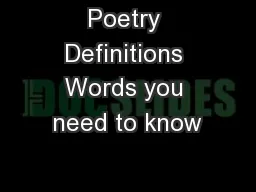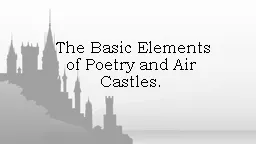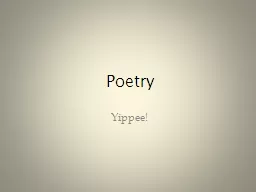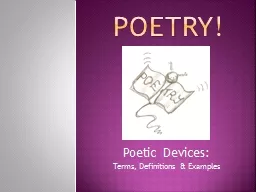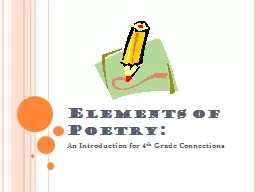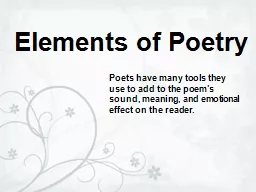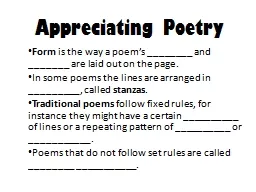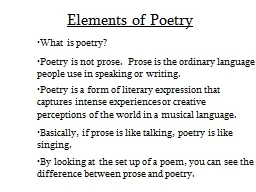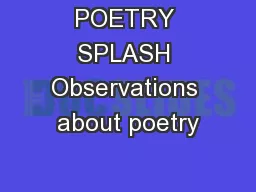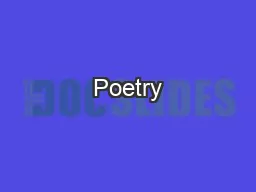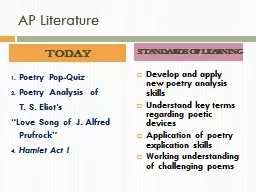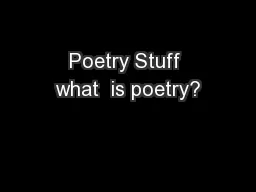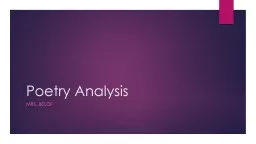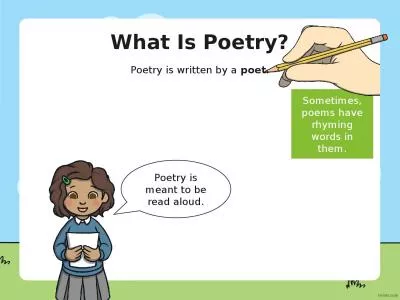PPT-Poetry Definitions Words you need to know
Author : natalia-silvester | Published Date : 2018-11-01
Alliteration The repetition of consonant sounds especially at the beginning of words Examples Fetched fresh as I suppose off some sweet wood Polly planted plenty
Presentation Embed Code
Download Presentation
Download Presentation The PPT/PDF document "Poetry Definitions Words you need to kno..." is the property of its rightful owner. Permission is granted to download and print the materials on this website for personal, non-commercial use only, and to display it on your personal computer provided you do not modify the materials and that you retain all copyright notices contained in the materials. By downloading content from our website, you accept the terms of this agreement.
Poetry Definitions Words you need to know: Transcript
Download Rules Of Document
"Poetry Definitions Words you need to know"The content belongs to its owner. You may download and print it for personal use, without modification, and keep all copyright notices. By downloading, you agree to these terms.
Related Documents

